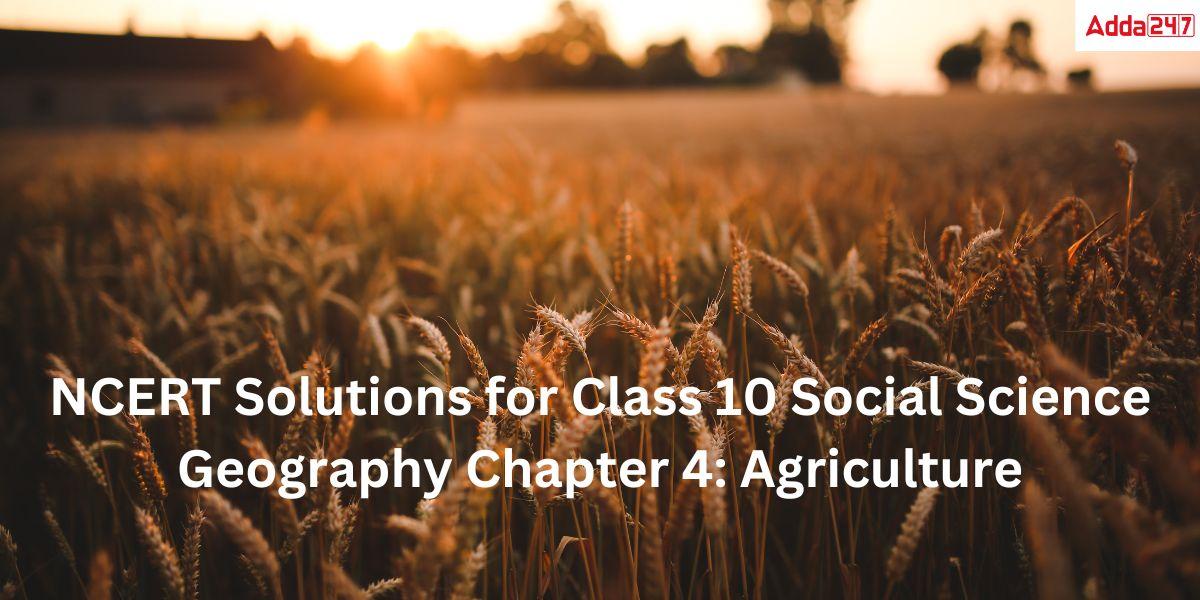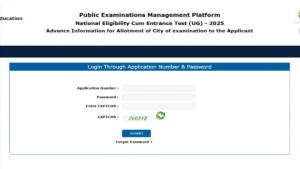Table of Contents
Agriculture- NCERT Solutions Class 10 SST Geography Chapter 4 Notes
NCERT Solutions for Class 10 Geography Chapter 4 Agriculture is given in the article.NCERT Solutions Class 10 is the best resource for obtaining a good score in the class 10 board Examination. The NCERT Solutions will aid your preparation for the CBSE examinations for Class 10 Geography Chapter 4 Agriculture. Here are Adda247 Expert faculty team prepared NCERT Solutions for Class 10 Geography Chapter 4 Agriculture along with in-text questions and exercises of that chapter for a better grasp of the topics. These solutions will help you understand the concepts covered in the chapter completely. So that students can pass their board exams with good scores. Keep learning with Adda247.
Read: NCERT Solutions for Class 10 Social Science Geography 5 Minerals and Energy Resources
Agriculture- Class 10 NCERT Solutions SST Geography Chapter 4: Quick Revision
Let’s quickly review the subjects and subtopics covered in Chapter 4 of Social Science Geography for Class 10 in the NCERT Solutions. prior to addressing the exercise questions.
- Types of farming
- Cropping Pattern
- Major Crops
- Food Crops other than Grains
- Non Food Crops
- Technological and Institutional Reforms
- Contribution of agriculture to the national economy, employment and output
- Impact of Globalisation on agriculture
NCERT Solutions for Class 10 SST Geography Chapter 4 Agriculture Pdf
NCERT Solutions for Class 10 Geography Chapter 4 Agriculture is given in pdf format so that students can easily download it for future use. Click here to download NCERT Solutions for Class 10 Social Science Geography Chapter 4_ Agriculture
NCERT Solutions for Class 10 SST Geography Chapter 4 Agriculture Question Answer
1 . Multiple choice questions.
(i) Which one of the following describes a system of agriculture where a single crop is grown on a large area?
(a) Shifting Agriculture
(b) Plantation Agriculture
(c) Horticulture
(d) Intensive Agriculture
Ans:(b) Plantation Agriculture
(ii) Which one of the following is a rabi crop?
(a) Rice (b) Gram (c) Millets (d) Cotton
Ans:(b) Gram
(iii) Which one of the following is a leguminous crop?
(a) Pulses (b) Jawar (c) Millets (d) Sesamum
Ans: (a) Pulses
2 . Answer the following questions in 30 words.
(i) Name one important beverage crop and specify the geographical conditions required for its growth.
Ans: The name of the important beverage is tea.
The geographical Conditions Required for Tea’s growth are as follows
1. CLIMATE: Tea is native to the monsoon lands, where high temperatures, a long growing season, and heavy rainfall promote the growth of tea plants. A growing season of at least eight months at a temperature of 21°C is ideal.
2. SOIL-Tea is grown in a variety of soil conditions. The best is a light, friable soil type with a porous subsoil that allows water to flow freely because tea is sensitive to stagnant water. In general, the best soils are slightly acidic and devoid of calcium.
3. SHADE- Tea shrubs grow better when they are protected from direct sunlight or strong winds. As a result, it is common practice in plantations to plant some large trees in between the shrubs to provide shade not only to the tea plants but also to the pickers.
4. LABOUR- Tea cultivation and processing are time-consuming tasks. On tea estates, field preparation, weeding, manuring, pruning, and picking take place all year. Tea picking is a laborious job that requires both skill and patience, so female labour is preferred.
5. RELIEF – Almost all commercially managed tea plantations are in the highlands and on hill slopes with good natural drainage. Tea cannot tolerate standing water, so waterlogged lowlands are unsuitable for tea cultivation. Almost all black tea traded internationally comes from highland districts.
(ii) Name one staple crop of India and the regions where it is produced.
Ans: One staple crop of India is rice.
Indians eat primarily rice, and the country’s climate is ideal for growing rice. West Bengal is the state that produces the most rice in India. Additionally, it is grown more in other states such as Assam, Bihar, Odisha, and Tamil Nadu.
(iii) Enlist the various institutional reform programmes introduced by the government in the
the interest of farmers.
(iv) The land under cultivation has got reduced day by day. Can you imagine its consequences?
3. Answer the following questions in about 120 words.
(i) Suggest the initiative taken by the government to ensure the increase in agricultural production.
(ii) Describe the impact of globalization on Indian agriculture.
(iii) Describe the geographical conditions required for the growth of rice.
The following geographical parameters are required for the growth of rice
- Climate – A hot, humid atmosphere is necessary for rice production. It works best in areas with high humidity, continuous sunshine, and a reliable supply of water. The crop needs an average temperature between 21 and 37℃ for the duration of its life. 400°C to 42°C is the highest temperature the crop can tolerate.
- Soil – The floodplains and deltaic regions’ rich alluvial soils, which are replenished each year, are perfect for growing rice.
- Rain- During the early months of its growing season, from June to July, rice needs enough rainfall or a good water supply from irrigation and flooded fields.
- Irrigation – rice grows with the help of irrigation where rain is not meet the adequate requirement. Crops may now be grown thanks to the development of an extensive network of tube wells and canal irrigation systems.



 NEET City Intimation Slip 2025 Available...
NEET City Intimation Slip 2025 Available...
 Manabadi TS SSC Results 2025 @bse.telang...
Manabadi TS SSC Results 2025 @bse.telang...
 CUET UG City Intimation Slip 2025: Relea...
CUET UG City Intimation Slip 2025: Relea...










